Climate settings largely determine the welfare of the animals (1/2)
30 December 2023
In many pig barns it is too hot, and the concentrations of ammonia and carbon dioxide are too high. In these conditions, pigs can never perform optimally. Growth is lagging behind and health problems are more likely to arise.
Thermal comfort and animal welfare are receiving more and more attention. For this reason, temperature settings have been further reduced and ventilation amounts (minimum and maximum ventilation) have been further increased with the aim of keeping it cooler in the stables. Here are the recommendations, as they are currently used in temperate countries like the Netherlands.
Peter van der Voorst
Independent climate specialist since 1985.
Guidelines for climate settings
Principles:
- The ventilation standards are guidelines and depend on, among other things, the ventilation system used, the animal behaviour, the health status, and the feed intake of the pigs.
- The stable and climate system is designed in such a way that no draught is possible at the level of the animals.
- The minimum ventilation standards are based on a maximum CO2 concentration of 0.30 vol.% (= 3000 ppm), measured while the animals are resting .
- The solid floor in the farrowing or piglet house is insulated and equipped with floor heating.

Source: Klimaatplatform Varkenshouderij (Climate Platform for Pig Farming)
*If the piglet nest is covered, the initial ventilation temperature can be set 2°C lower, depending on the design of the covered piglet nest (risk of draught in the piglet nest).
**When using an insulated closed lying floor with floor heating.
In the case of a fully slatted floor or a solid lying floor without floor heating, set the initial ventilation temperature by approx. 2°C higher.
The above guidelines relate to a pig barn, as described here. It may be that due to specific farm conditions, other settings are necessary to prevent draught for the piglets. Always consult a climate advisor for individual advice.
Already in 2005, research was conducted into the behaviour of fattening pigs in relation to temperature (see image below).
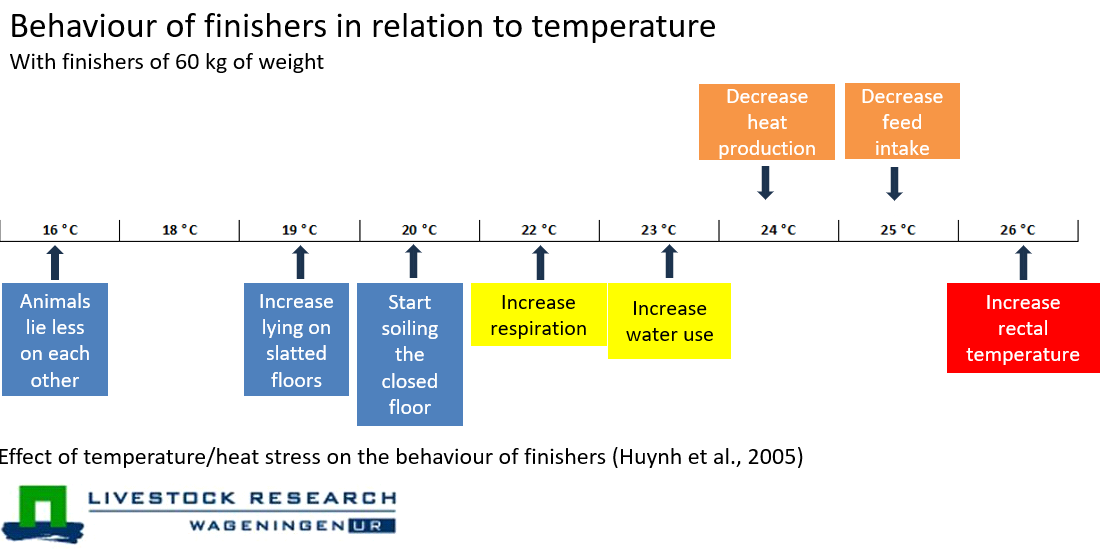
This shows that above 19°C ambient temperature, the behaviour of the animal will already change. They lie down more on the slatted floor instead of the solid floor to cool down. Above 25°C ambient temperature, the animals are already restricting feed intake and thus in growth.
It is therefore important to keep the barn temperature low so that the animals can perform as well as possible.
Good air quality is also very important for animal welfare and therefore for good technical results.
Parameters that are important and quite easy to measure are:
- Carbon dioxide
- Ammonia
- Relative humidity
Carbon dioxide (CO2)
Carbon dioxide is a gas that is released in a barn when the animals exhale.
Additional carbon dioxide can be released when gas is burned to heat the barn.
Carbon dioxide is not directly a harmful gas, but the height of the concentration is an excellent measure of the level of ventilation in the barn.
With minimum ventilation, the carbon dioxide content should not exceed 3000 ppm. At maximum ventilation, the carbon dioxide should be below 1000 ppm. In clean outdoor air, the carbon dioxide content is ± 400 ppm.
Ammonia (NH3)
The ammonia concentration also plays a major role in a pig barn. Concentrations above 20 ppm are harmful to human and animal. This causes irritation to the eyes and mucous membranes. It is not always easy to reduce the ammonia concentration with more ventilation.
If there is a lot of soiling of the closed floor or if there is air circulation in the manure pit, this has priority. Air circulation in the manure pit must always be prevented. This can be detected with a smoke test. Soiling of solid floors can be reduced by adjusting the lying behaviour of the animals. There are various practical tools for this, such as a solid floor with sawdust, wetting the slatted floors, blocking the corners, etc.
Relative humidity (RH)
The relative humidity in a barn should be between 60 – 80%. However, if it is very humid outside, the humidity inside will also increase. It can also become too humid in the barn because of a too low ventilation level. If this is the case, the carbon dioxide content is also often too high.
Monitoring 24/7:
The aforementioned climate parameters can now be monitored very well 24 hours a day with sensors. This is more and more used to adjust the climate settings where necessary.
It also makes it very clear what happens in the stables at night. Larger temperature fluctuations are made more visible and defects in the ventilation system are earlier identified.
Here is an example of how these parameters are made visible (see images below).
Weekly overview
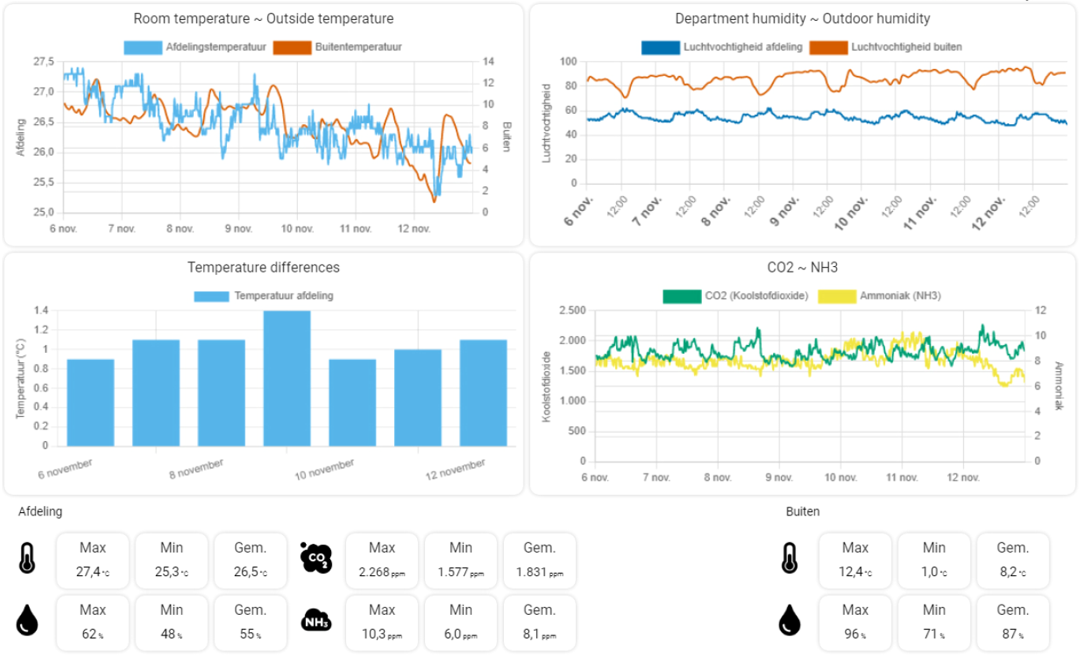
Dashboard
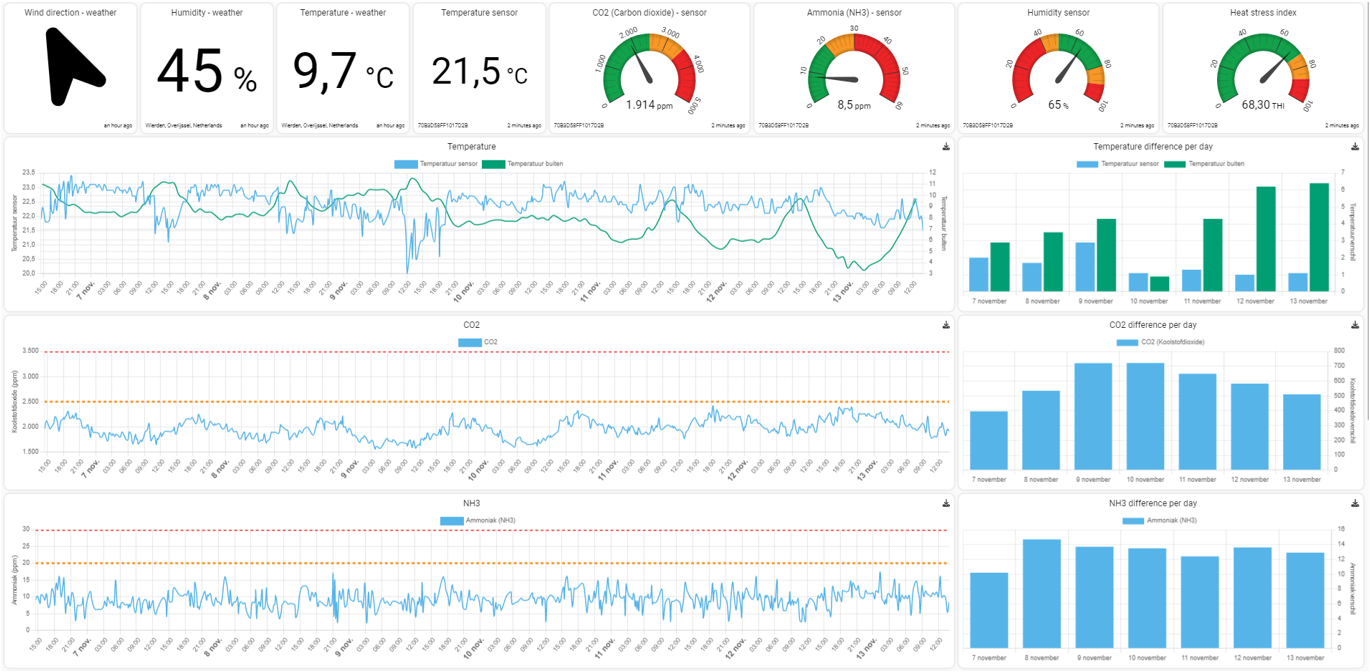
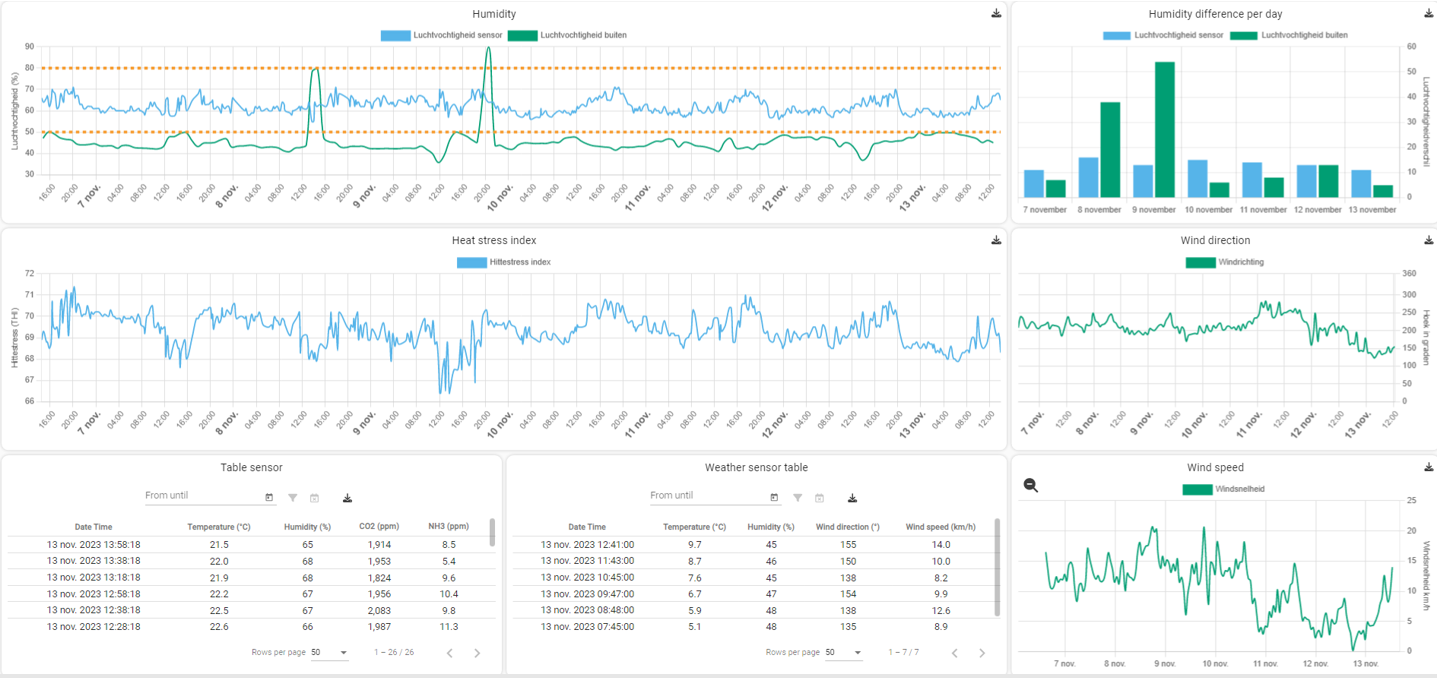
Benchmark
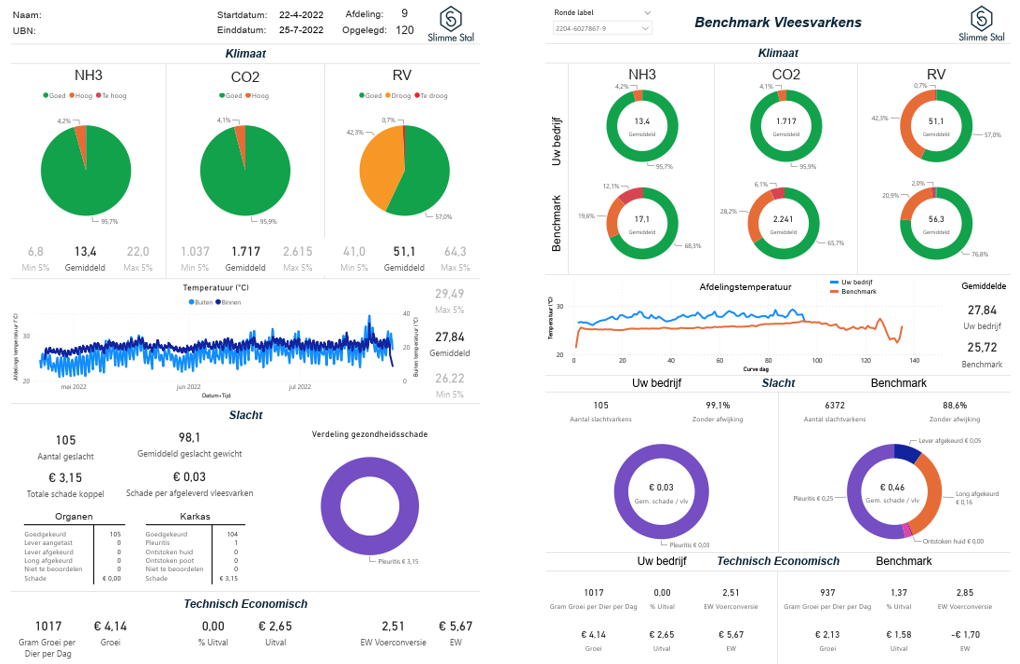
By applying this sensor technology in a pig barn, many pig farmers have gained a much better picture of what is going on in the barn 24 hours a day. Previously, it was thought that it was quite good in the barn.
A piece of farm blindness. The measurements showed it was not as good as they thought.
Once a week, pig farmers see an overview of what was going on in the barn that week but can also see what is going on in the barn in real time on a "dashboard" at that moment. At the end of a production cycle, pig farmers can get an overview of the cycle and there is a comparison with other pig farmers (benchmark data). This shows again: "Measuring is knowing".
The above-mentioned recommendations for climate settings are guidelines and may differ per farm, but as a basis, excellent results can be achieved with them. Of course, the basics must be in order. By the basis, I mean the building in which the animals reside, and the ventilation system used.
We know different ventilation systems, so I am often asked what is the best ventilation/air distribution system. I have always said that the systems we know are all good, provided they meet the requirements of this system. However, this is where things often go wrong, because when building a barn, it is often thought that certain requirements can be changed to reduce construction costs. In retrospect, this often turns out to be a wrong choice.
Air inlet systems:
Door ventilation:
The simplest and cheapest system of air inlet is air inlet through an opening in the door of a barn or compartment.
The most important requirement for this system is that the corridor, over which the air spreads through the compartment, is sufficiently wide and the opening in the door is sufficiently large. If this is not the case, the air always goes back too fast, which means that there is not enough fresh air in the front pens and too much fresh air in the last pens.
For each fattening pig 1 cm aisle width is advised. So, for 100 fattening pigs in a section, the corridor must be wide, at least 100 cm.
This is also the reason that with today's large compartments, door ventilation is no longer an option.
To get better fresh air into the front pens and to reduce the speed of the incoming airflow, it helps very well to have a board of about 20 cm wide, about 3 m from the door, standing in the middle of the hallway (see photo). The door all the way open above 50% ventilation also works well. The larger the opening, the lower the air velocity. It is better not to get the air directly from outside, but through a corridor or anteroom.
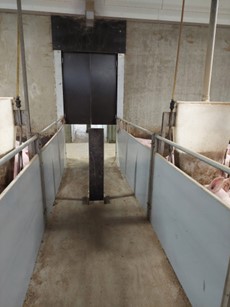
Duct ventilation:
Duct ventilation is an air inlet system that is very similar to door ventilation. The air comes up through a duct under the corridor through slats and spreads evenly over all the pens.
It is important with this system that the air inlet from outside, under the barn and through the slats is calculated for 1.5 cm²/m3 of maximum air to be ventilated.
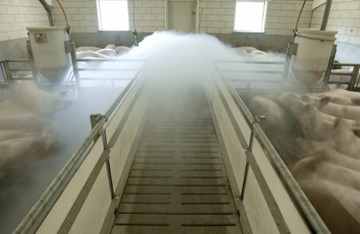
A major advantage of both door ventilation and duct ventilation is that the fresh air reaches the animals directly. There is little mixing with barn air.
In practice, we often see that the air inlet openings are not in line with the requirements because of construction costs.
Ceiling ventilation:
With the ceiling ventilation system, the fresh air is distributed throughout the entire department through a diffuse or perforated ceiling. Such a ceiling is custom-made for the compartment in question, depending on the surface area and the maximum amount of air that needs to be ventilated. It is also important with this system that the entire department is otherwise properly sealed. There are different types of ceiling ventilation available. Here are some examples:
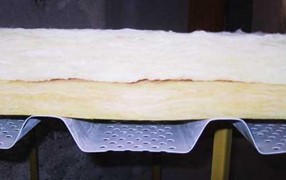
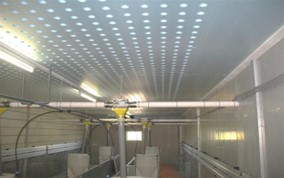
Glass wool blanket Perforated insulation board
It is important that the ceiling is not perforated closed to the external wall to avoid that cold air falls along the wall directly on the pigs.
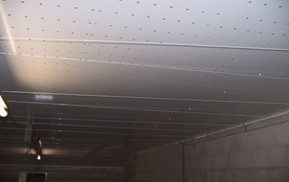
Perforated plastic foil
Valve ventilation:
A commonly used air inlet system is the system with wall or ceiling valves.
The number and size must be calculated on the basis of the maximum amount of air to be ventilated. Subsequently, a correct adjustment and a very well-sealed barn are the prerequisites for the air inlet system to function properly. There are now many different air inlet valves on the market. Of course, every manufacturer has the best valve, but any type of valve can function well if it meets the requirements. Here are some examples of air inlet valves:
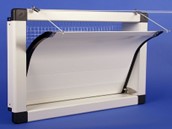
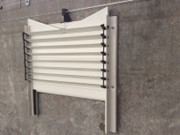
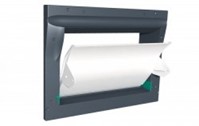
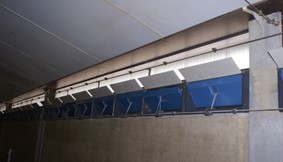
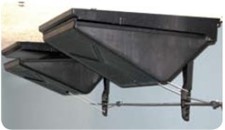
Combi ventilation:
Combi ventilation is a mix of ceiling ventilation and door ventilation. The fresh air enters through an opening in the ceiling and then falls into the corridor to be distributed to the pens where the animals are. It is important with this system that the maximum opening is calculated on how much ventilation is provided at maximum ventilation (1.5 cm²/m3 maximum air to be ventilated). The opening should also be adjustable.
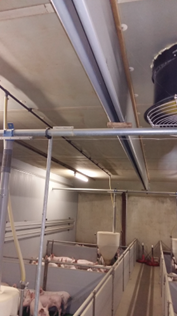
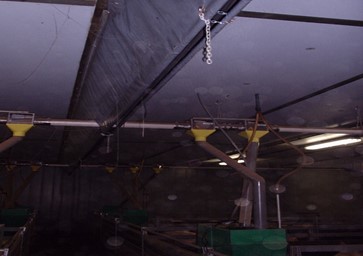
Tube ventilation:
Tube ventilation is an air inlet system that is extremely suitable for farrowing sows. In the case of farrowing sows, it is important that the fresh air is arriving directly at the sow's head. It has to be warm for the piglets, but not for the sows. If it is too hot for the sow, she will eat less and therefore produce less milk. A cover above the piglet's nest is of course also a great alternative to keep the piglets warm combined with a lower room temperature. However, for pig farmers who prefer not to have a piglet’s nest cover, tube ventilation is a very good alternative. The tube should have a diameter of 200 mm and the opening should be halve during the winter months. This is to maintain sufficient negative pressure, so that the same amount of air continues to come out of all tubes.
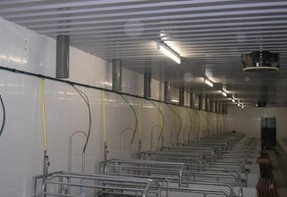
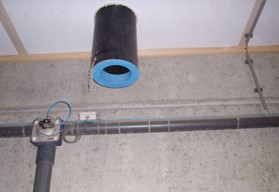
The air inlet systems described above are described quite briefly. Detailed details and conditions can best be read in the leaflets of the "Klimaatplatform Varkenshouderij" (https:// www.wur.nl/nl/show/klimaatplatforms-varkens-en-pluimveehouderij.htm ).
